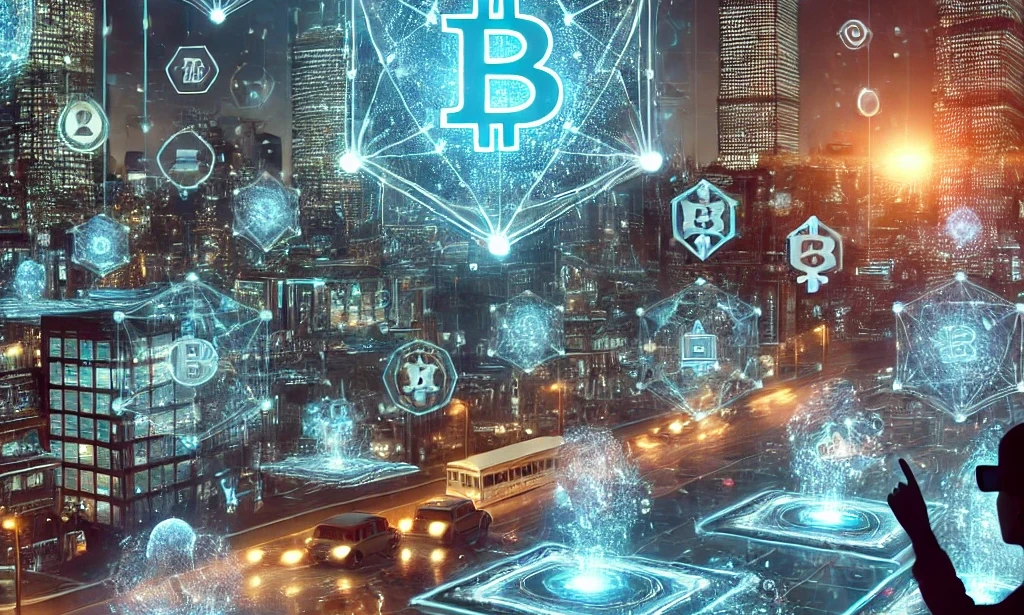The Future of Web3: What’s Next for Blockchain and Decentralization?
Web3, the decentralized evolution of the internet powered by blockchain technology, is rapidly transforming industries, governance, and digital ownership. While still in its early stages, Web3 promises a more open, trustless, and user-centric internet. But what does the future hold for this emerging space? Let’s explore the key trends and developments shaping the next phase of Web3.
1. Scalability and Mass Adoption
One of the biggest hurdles for Web3 has been scalability. Ethereum’s high gas fees and slow transaction speeds have limited mainstream adoption. However, Layer 2 solutions (like Arbitrum, Optimism, and Polygon), along with alternative blockchains (such as Solana, Avalanche, and Near), are addressing these issues. The future will likely see widespread use of rollups, sharding, and improved consensus mechanisms like proof-of-stake to enhance efficiency and make blockchain more accessible to everyday users.
2. Interoperability Between Blockchains
Currently, blockchains operate in silos, making it difficult for assets and data to move seamlessly across networks. The rise of cross-chain bridges, protocols like Cosmos and Polkadot, and advancements in interoperability standards will create a more connected Web3 ecosystem. This will allow decentralized applications (dApps) to interact across multiple chains, fostering innovation and improving user experience.
3. Decentralized Finance (DeFi) 2.0
DeFi has revolutionized financial services, offering lending, borrowing, and yield farming without intermediaries. However, challenges like smart contract vulnerabilities, liquidity issues, and regulatory uncertainty remain. The next wave of DeFi (DeFi 2.0) will focus on improved risk management, institutional adoption, and innovative financial products such as real-world asset tokenization (RWA) and decentralized identity solutions.
4. The Evolution of NFTs and Digital Ownership
Non-fungible tokens (NFTs) have expanded beyond digital art and collectibles into gaming, music, real estate, and intellectual property. In the future, NFTs will play a crucial role in the metaverse, enabling verifiable ownership of virtual land, assets, and even identity. Additionally, NFT financialization (NFT lending, fractional ownership, and rental models) will unlock new economic opportunities.
5. Decentralized Social Media and DAOs
Web2 social media platforms have been criticized for censorship, data privacy concerns, and centralized control. Decentralized social networks like Lens Protocol and Farcaster aim to give users control over their data, monetization, and content distribution. Similarly, Decentralized Autonomous Organizations (DAOs) are reshaping governance by allowing token holders to participate in decision-making, leading to a more democratic and community-driven future.
6. AI and Web3 Convergence
Artificial intelligence (AI) is poised to integrate with blockchain in powerful ways. AI-driven smart contracts, decentralized AI models, and AI-powered dApps will enhance automation, security, and efficiency within Web3 ecosystems. This synergy could revolutionize industries like predictive analytics, fraud detection, and personalized finance.
7. Regulatory Challenges and Compliance
Governments and regulatory bodies are increasingly scrutinizing Web3 projects, particularly in DeFi, crypto exchanges, and stablecoins. While some regulations may hinder innovation, others will provide clarity and legitimacy, fostering institutional participation. The future will likely see a balance between decentralization and compliance, with frameworks that encourage responsible innovation.
8. The Rise of the Metaverse and Web3 Gaming
Web3 gaming and the metaverse will play a major role in the future of digital interactions. Play-to-earn (P2E) models, blockchain-based virtual worlds, and decentralized identity will redefine how users engage with online content. Projects like The Sandbox, Decentraland, and others are already pushing the boundaries of virtual ownership and community-driven economies.
Conclusion
Web3 is still evolving, but its potential to reshape industries, empower individuals, and create new economic models is undeniable. As scalability improves, interoperability expands, and new innovations emerge, the next phase of Web3 will be defined by greater adoption, regulation, and real-world utility. Whether through decentralized finance, NFTs, DAOs, or the metaverse, Web3 is paving the way for a more decentralized and user-controlled internet.
The future of Web3 isn’t just about technology—it’s about a shift in power from centralized authorities to individuals. Those who understand and embrace this shift will be at the forefront of the next digital revolution.

You must be logged in to post a comment.